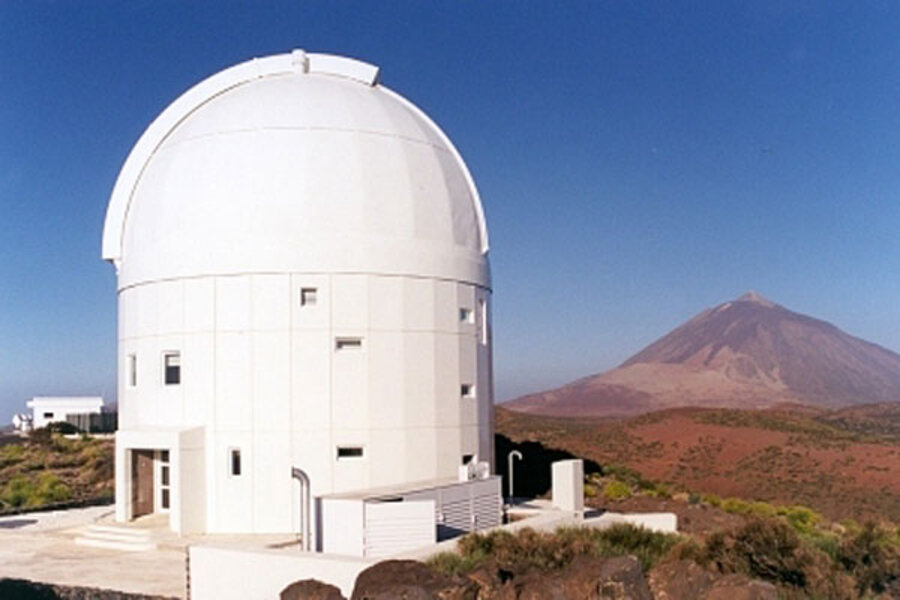Quantum 'teleportation' distance record broken
Loading...
Physicists have "teleported" quantum information farther than ever in a new study reported Wednesday (Sept. 5).
This kind of teleportation isn't quite what Scotty was "beaming up" on television's Star Trek, but it does represent a kind of magic of its own. While Star Trek's teleporters transport people from place to place instantaneously, quantum teleportation sends information.
A team of scientists from Austria, Canada and Germany have now beamed the quantum state of a particle of light from one island to another 89 miles (143 kilometers) away.
"One can actually transfer the quantum states of a particle — in our case a photon — from one location to another location without physically transferring this photon itself," explained physicist Xiaosong Ma of the Institute for Quantum Optics and Quantum Information at the Austrian Academy of Sciences in Vienna.
To do this, the researchers started out with three particles: one particle to be teleported, and two "entangled" particles. Entanglement is one of the most bizarre implications of the theory of quantum mechanics, which governs the physics of tiny particles. When two particles are entangled, they become connected in such a way that, even if separated over vast distances, an action performed on one affects the other.
In the recent experiment, all three photons started out on the island of La Palma, one of the Canary Islands off the coast of Spain. One of the entangled photons was then sent through the air 89 miles to the Canary Island of Tenerife. Since the particles were entangled, when a measurement was made of the quantum states of the two particles on La Palma, it affected the particle on Tenerife, too, allowing the first particle to essentially be recreated in a new location without traversing the distance. [Stunning Photos of the Very Small]
This achievement beat the previous quantum teleportation distance record of 60 miles (97 km), set by a Chinese research group just months ago. It represents a significant step toward establishing a "quantum internet" that could allow messages to be sent more securely, and calculations to be completed more quickly, scientists say.
"The quantum internet is predicted to be the next-generation information processing platform, promising secure communication and an exponential speed-up in distributed computation," the researchers write in a paper detailing their experiment published online Wednesday in the journal Nature.
The next step will be to establish quantum teleportation between Earth and orbiting satellites.
"The future goal of our research work will be to do such experiments on the satellite level," Ma told LiveScience. "This will enable intercontinental quantum information exchange."
You can follow Clara Moskowitz on Twitter @ClaraMoskowitz or LiveScience @livescience. We're also on Facebook &Google+.
- Wacky Physics: The Coolest Little Particles in Nature
- Twisted Physics: 7 Mind-Blowing Findings
- Top Ten Unexplained Phenomena
Copyright 2012 LiveScience, a TechMediaNetwork company. All rights reserved. This material may not be published, broadcast, rewritten or redistributed.





